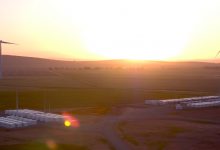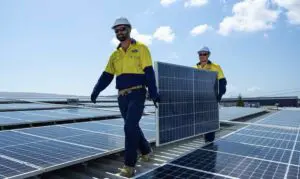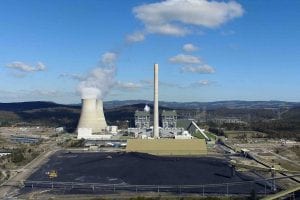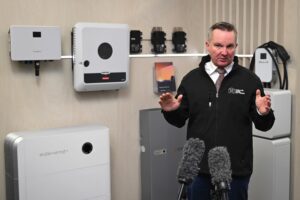“I’m interested in stuff that works,” prime minister Scott Morrison glibbed this week, when he threatened to get the government’s wholly owned utility Snowy Hydro to build a massive 1GW gas plant at Kurri Kurri if the market failed to replace the ageing Liddell coal generator with kit that his government likes.
Talk about overkill. The extraordinary ultimatum has completely stumped the market, which simply can’t work out what the government is up to. The Australian Energy Market Operator says there is no reliability gap, and the report from the government’s own Liddell Task Force contradicts the claims by Morrison and energy minister Angus Taylor that prices would “skyrocket” without their boots-and-all intervention. And if their real intention is to encourage the private sector to invest, then threatening to build a subsidised monster over the top of their projects is probably not the best way to go about it.
So what did Morrison and Taylor really want? Software billionaire Mike Cannon-Brookes said if it’s just to have enough “dispatchable” capacity, as defined by the energy experts, then he’s prepared to build a really big battery himself. And so he promptly hopped on the phone to Tesla boss Elon Musk to discuss the options. But AGL and others are already building way more than 1GW of battery storage, amongst other things, so where is the gap that is supposed to be filled?
And that’s where it appears politics and ideology got in the way of expert advice. Morrison insists he is technology neutral – it could be coal, gas, hydro or battery storage, he said. But then Taylor added a complication. Any big battery needed to have “appropriate” storage, but he wouldn’t say what that meant, until later in the week he told ABC that “dispatchable” energy, despite what the experts say, has to be “365 days a year, 24 hours a day”. In other words, it has to be “baseload.”
Morrison’s new bestie, the businessman Andrew Liveris, who serves on the board of the world’s biggest fossil fuel company, Saudi Aramco, and who, surprise surprise, is a strong advocate of gas, weighed in by saying that batteries were not up to the job of providing baseload.
And therein lies the problem. This is a group of powerful people who simply have not understood the dynamics of the energy transition going on around them. They are firmly attached to the old paradigm of “baseload” power. You wonder what it is that this group understands about battery storage. The signs are not good.
Remember, this is the same PM who not only waved a lump of coal in parliament urging Australians “not to be afraid”, he then mocked the usefulness of the Tesla big battery by comparing it to the Big Banana and the Big Prawn.
“I mean, honestly, by all means have the world’s biggest battery, have the world’s biggest banana, have the world’s biggest prawn like we have on the roadsides around the country, but that is not solving the problem,” Morrison said at the time. The then resources minister Matt Canavan, who still wants to build new coal generators, added to the fun by comparing the big battery to the Kardashians.
Taylor reckons a big gas generator, rather than a big battery, is needed to avoid load shedding, and he singled out South Australia as the prime example. But here’s the irony: South Australia has not had any significant load shedding since February 2017, and that event was caused by the failure of the state’s biggest gas generator to switch on when needed. It was that very failure that directly led to the billionaire tweets between Cannon-Brookes and Musk, and the construction of the Tesla big battery.
It’s also interesting to note that the last big loading shedding event in Australia happened in West Australia in January this year when more than 95,000 people had their power cut off for several hours. According to AEMO, that was the result of a failure at the modern gas unit at Kwinana, and a cascading series of events involving other gas generators. It probably would not have happened had there been a big battery in the local grid.
Indeed, the last major load shedding that occurred in the eastern states was on Saturday August 25, 2018 – ironically, Morrison’s first full day in office as PM after the dethroning of Malcolm Turnbull.
The failure of the main transmission link between Queensland and NSW due to lightning strikes caused widespread outages in all states -except South Australia, thanks to the quick response of its big battery. The Big Banana didn’t keep the lights on in NSW and the Kardashians were on Instagram. We wrote about it at the time: On first day as PM, Morrison learns difference between Big Battery and Big Banana. But we are not sure he read it.
When another catastrophic event occurred in January this year, after the main line between Victoria and South Australia was blown down by a storm, and the Portland smelter in Victoria tripped off, sending shock-waves through the grid, the quick response of the Tesla big battery, and the state’s other big batteries, prevented any load shedding in South Australia. The three big batteries then played a critical role in holding the South Australian grid together for more than two weeks while the line was repaired.
The Tesla big battery has proved an enormous success, delivering good returns to its owners and massive savings to consumers. There are now another five big batteries on the main grid, and at least another dozen on their way. There will be more.
But all we hear from conservatives are absurd claims that batteries are effectively useless because they can only power South Australia for a second or two. Or, as Liveris argued this week at the National Press Club, that the output of Elon Musk’s giga-factories could power the US for three and a half seconds. You don’t have to understand much about energy to know how mind-numbingly stupid and dishonest such comparisons are.
Batteries will form an essential part of the energy mix. Not just for their ability to store excess output from wind and solar when demand and prices are low, and discharge and feed energy back into the grid when demand and prices are high, but also for the multiple different services they can provide to the grid.
As Tesla noted in a recent submission to AEMO, there’s actually not much they can’t do. They’ve proven adept at frequency control, they can provide inertia, they can provide voltage and reactive power control, they can deliver black start services, and they can be “grid forming” rather than “grid following”, so they can hold a grid together in the absence of any synchronous generation, as the Newman battery in W.A. and the Dalrymple battery in S.A. have demonstrated.
They can also be an effective and cheaper substitute for extra grid augmentation. They can be used at the end of a transmission line to provide the safety net to allow those lines to operate at full capacity, rather than being constantly constrained to guard against the risk of a fault.
And their speed and flexibility make them an invaluable tool for the grid operator. They now form a main plank of the AEMO’s protection systems, and as soon as markets are created that truly value the variety of services that they can offer, starting with the 5-minute settlement that honours their speed and which will be the death-knell for some slow and ageing gas generators in 2021, then the case and need for gas will be even more diminished.
Morrison might have known this if he had chosen – as he has during the Covid-19 pandemic – to stand next to experts and listen to them, rather than lobbyists like Liveris, and the head of the Covid Commission Nev Power, and Grant King; all gas boosters to the core.
And so for Morrison, in what he called “energy week”, which started with the gas ultimatum and finished with the defenestration of the Australian Renewable Energy Agency and the Clean Energy Finance Corporation, it was just all talk. “Australia has seen an unprecedented influx of renewable generation. This is not something we have sought to hold back, rather we have encouraged it,” he declared.
Excuse us, but this government first tried to kill the renewable energy target, then claimed too many renewables would cause economic ruin, and now has an energy minister in Taylor who has claimed, on numerous occasions, that there is too much wind and solar in the grid.
The laughs continued when Paul Broad, the CEO of the government-owned Snowy Hydro, declared that Snowy would be the first utility to take consumer interests to heart, rather than interests of the generator oligopoly. This from a man who has been a ferocious opponent of the very policies that could lower consumer bills, such as energy efficiency and demand response.
Broad has even described “demand response”, when consumers are paid to shift their power use to avoid peak demand periods, as “enforced blackouts.” Snowy doesn’t like the idea because it means less opportunity to burn diesel in their fleet of peaking generators and have their hydro plants cash in on the price spikes. And it has also been highly dismissive of batteries and argued furiously against the shift to 5-minute settlements.
Oh I forgot! $!
We need to understand the funding that govt is prepared to commit. Is it a subsidy? Is it an investment? What are the assumed returns? How big? Who is judging that?
(without this it’s hard for market to debate alternatives)
— Mike Cannon-Brookes ???????????????? (@mcannonbrookes) September 17, 2020
That leaves the energy market, and people like Cannon-Brookes, confused and dismayed. Cannon-Brookes, who plans to build the world’s biggest battery as part of the Sun Cable project in the NT, and is championing the Beyond Zero Emissions Million Jobs Plan, reached out on Twitter, trying to make sense of it all, pointing out how batteries like Tesla Megapacks are replacing gas generators in California, and across the US, and wondering why the obsession with 24/7 generation.
The government hasn’t responded, perhaps because it doesn’t know. If Morrison and Co are generally interested in “stuff that works” – rather than just stuff that pollutes – they might want to tune into Tesla’s Battery Day next week, when the next phase of battery storage development will be unveiled, possibly including the “million-mile” battery, and vast leaps in efficiency.
Then they can make a more informed decision about whether the Big Banana, or their gas transition policy, can really cut the mustard. The Kardashians, sadly, are no longer an option. Like Liddell, they are taking themselves off the grid.








